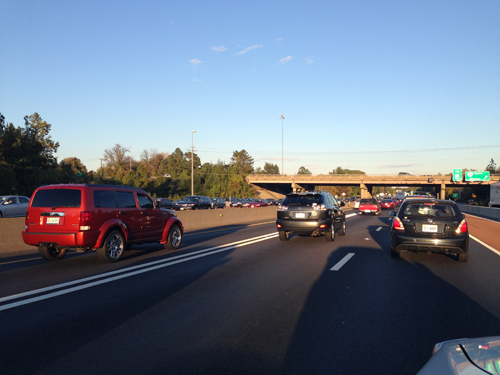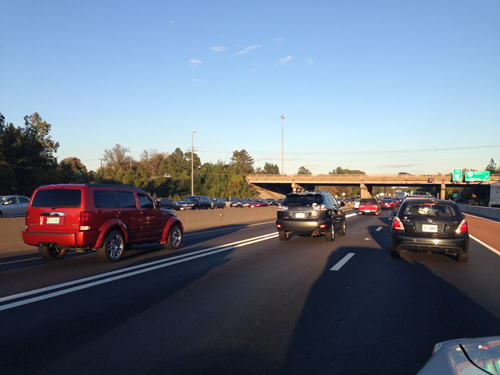FAIRFAX, Va. — At a meeting Thursday at the Virginia Department of Transportation headquarters, dozens of residents came out to give their opinions on whether to add a new lane, and tolls, to Interstate 66.
“I’m glad they’re finally doing something about it. It’s long overdue,” says Nick Embrey, of Centreville, Virginia.
VDOT plans to add one new lane in each direction from the Capital Beltway to Haymarket. All three options on the table would include three general free lanes and two toll lanes in each direction. Two options include flexible bollards to divide the lanes, similar to the 495 Express Lanes. A third option would use a concrete barrier, similar to the 95 Express Lanes. HOV-2 would change to HOV-3 and, like the current Express Lanes, only non-HOV drivers would have to pay the toll.
Two of the three options would preserve space in the median for Metro to expand the Orange Line in the future.
“Traffic on I-66 is becoming a daily part of our lives. That’s why it’s so important to focus on this corridor,” says Renée Hamilton, VDOT’s deputy district administrator. “Having managed lanes gives people choices. You’ll have three lanes that are free, but if you want to have a quicker trip, then you’ll have the toll option.”
Craig Lane, of Leesburg, says widening I-66 is good, but he disagrees with adding toll lanes.
“There are days when I can’t leave our business parking because of all the backups on 66 and the spillover over to 50, so adding new lanes in the suburbs is a great idea,” he says. “I’m definitely not in favor of HOT Lanes, toll roads or even the HOVs. They would do away with a lot of the problems if they just got rid of the HOV Lanes.”
However, opponents such as Stewart Schwartz, of the Coalition for Smarter Growth, are very worried about widening highways.
“We can’t pave our way out of traffic. So we have to consider all the modalities at the same time — not just adding another cubic yard of concrete,” says Charlie Dyer of Fairfax Station, Virginia.
Schwartz says he believes transit is the best way to solve congestion problems. Hamilton says carpooling and rapid bus service with limited stops along the Express Lanes would encourage transit. But Schwartz counters that similar promises about new rapid bus service were made regarding the 495 and 95 Express Lanes and neither actually happened.
“Transit is an integral part of the 66 project. We are going to build new park-and-rides. We will have new rapid bus service. We also want people to carpool more,” says Hamilton.
Like the 495-95 Express Lanes, the 66 Express Lanes project would be a public-private partnership in which a private company would build and operate the road and assess variable tolls to recover the costs. VDOT is asking companies that are interested to submit qualifications within the next few weeks. Transurban-Flor, which built the 495 and 95 Express Lanes, could be the frontrunner for the I-66 project as well.
While some said they wouldn’t personally use toll lanes, having the choice was important.
“It is a free country. If someone wants to pay $12 or $20 to go out to Haymarket, then why not? But, I wouldn’t pay that much,” says Helga Knapp, of Oakton, Virginia.
“I don’t like the idea of toll lanes, but it’s the way of the future because money is tight and the local roads are in horrible shape,” says Joanne Dyer, of Fairfax Station.
The preliminary cost for the project ranges from $2 billion to $3 billion, with some money from the public to supplement money from the private company.
VDOT’s presentation on the I-66 project can be seen on its website.
Follow @WTOP and @WTOPTraffic on Twitter and WTOP on Facebook.







